When it comes to modern hard drives, these are true warriors of reliability. The Deskstar NAS series was released in early 2014, coming in capacities up to 6TB (from 2017, 10TB). These were not cheap drives at the time by any means, at least in Europe, being 30-40% more expensive than their competitors. Nonetheless, with HGST’s incredible reputation at the time, making such a proposition wasn’t a hard buy. These certainly hold up incredibly well.
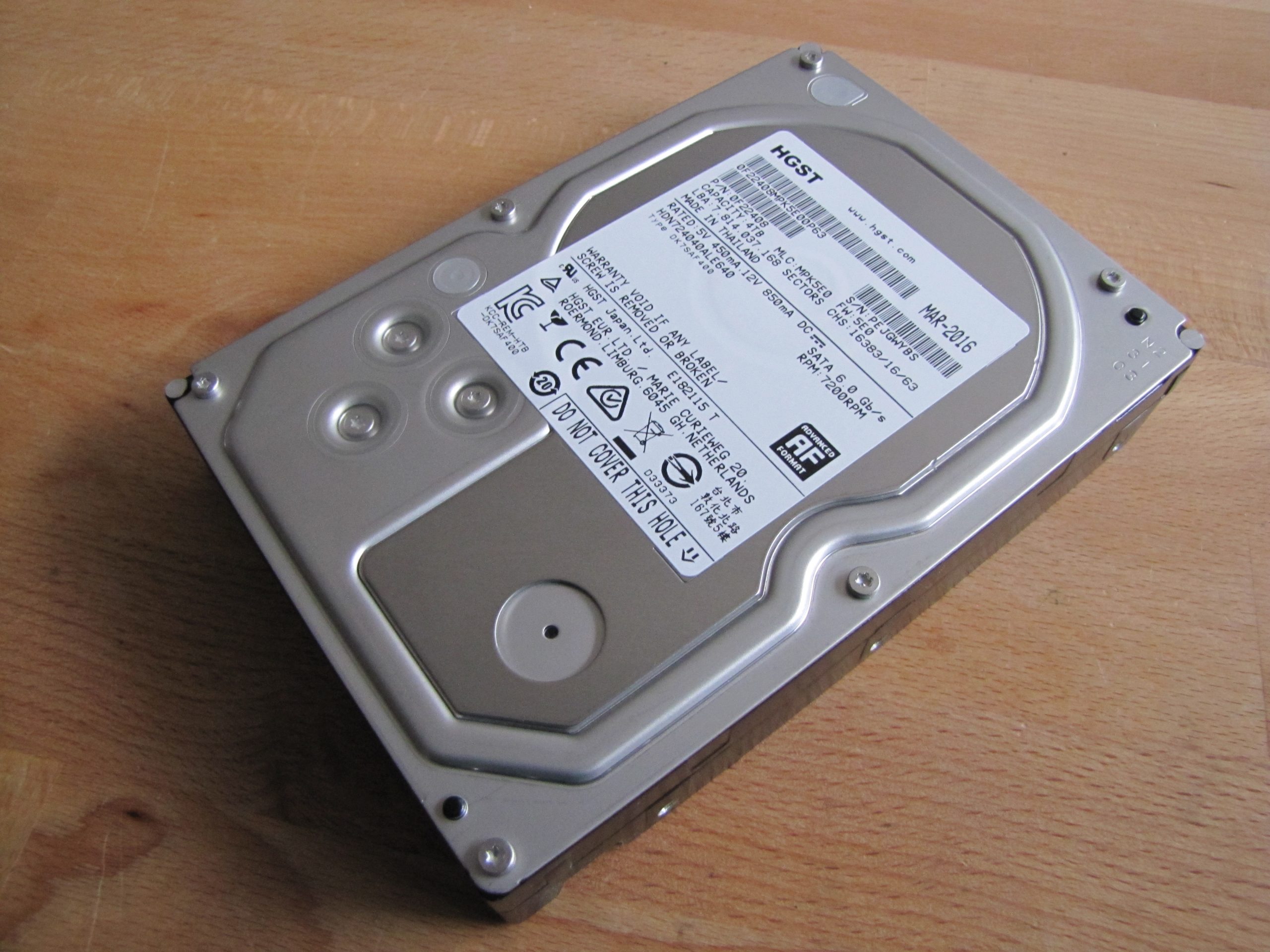
Drive Attributes ---------------------------------------- HGST Deskstar NAS HDN724040ALE640 ---------------------------------------- Capacity 4TB Mfc Date 2016-03 Format 3.5" Interface SATA Platters 5 Heads 10 Cache 64MB RPM 7200 Protocol Serial-ATA/600 Origin Thailand (HGST) Codename Mars-KP ----------------------------------------
With 5 platters, these are loud & hot monsters. They performed well when new, although are considered to be relatively slow these days compared to new 4TB model offerings, with a density of 800GB per platter. Nonetheless, 170MB/s was the peak these would reach, mostly remaining within the 120-130MB/s boundary.
Unlike most NAS drives at the time, the Deskstar NAS series touted the 7,200 RPM spindle speed proudly on the retail box. 5,400 RPM drives were much easier to find at the time for NAS use, after all. These are based on the 7K4000’s Hitachi had already released at the time.

Being a few years into the WD buyout of Hitachi’s storage division, these proudly bare the HGST name. Hitachi did away with the present Deskstar and Ultrastar branding on their labels several years prior, but the label structure remains nigh the same. Being that WD acquired Hitachi’s assets in Thailand, these hail from there, never being produced in China as is expected.
This one is from early 2016, only a few years before WD would kill the HGST brand as a whole.
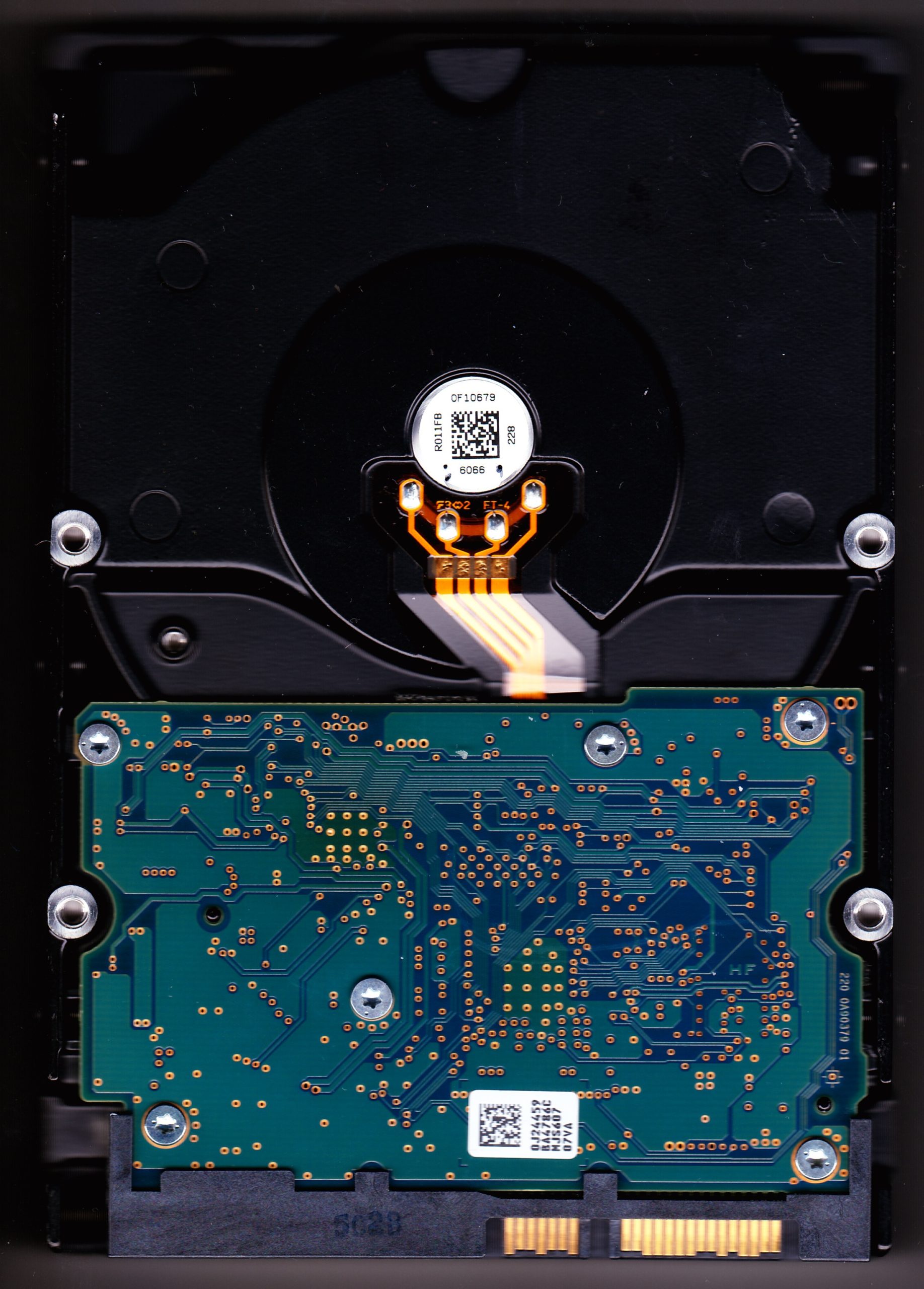
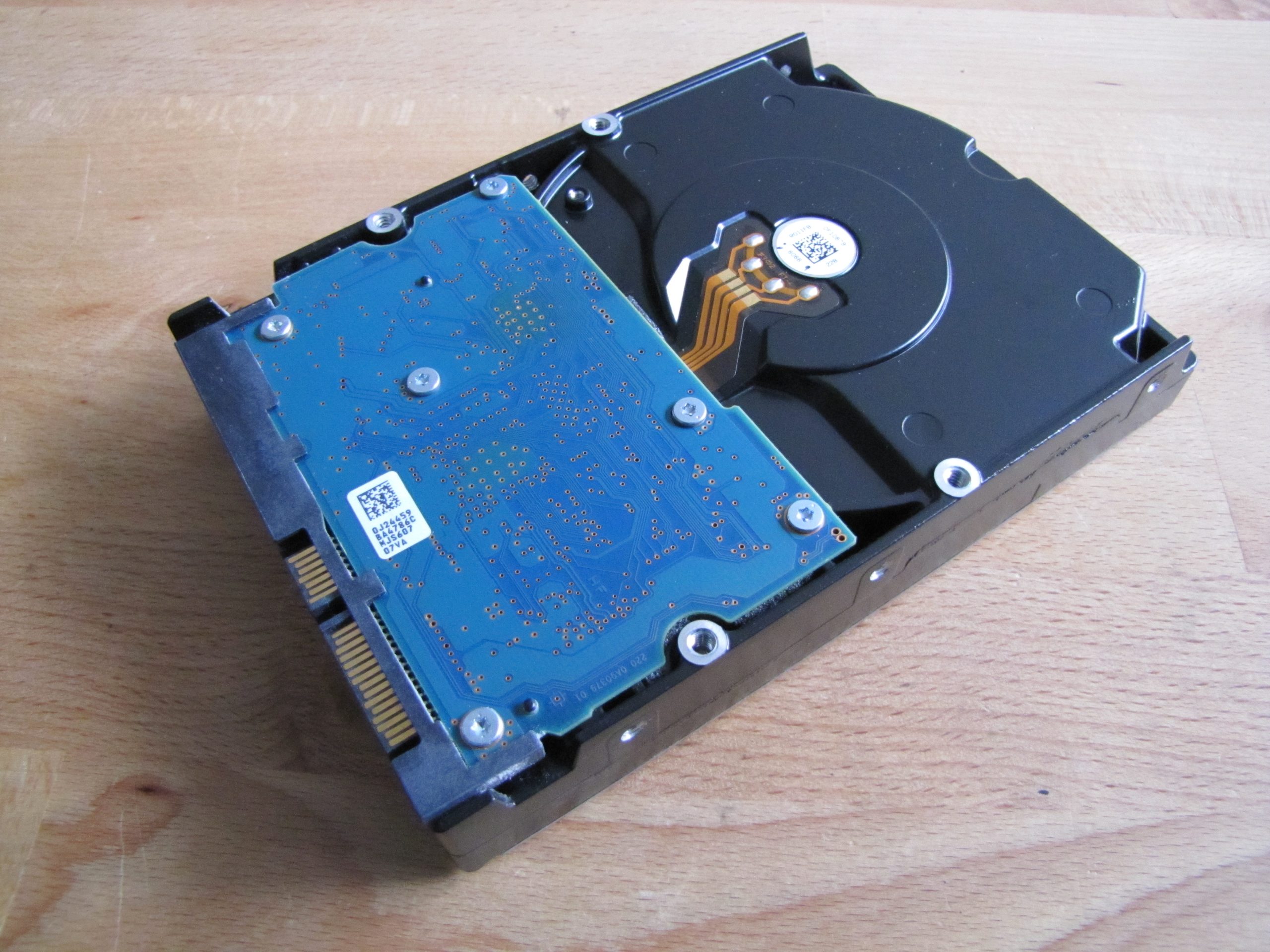
With 5 platters, there’s not much room to spare. There’s nothing in particular to discuss here, PCB’s on Hitachi drives had been flipped for a while at this point. No architecture markers!
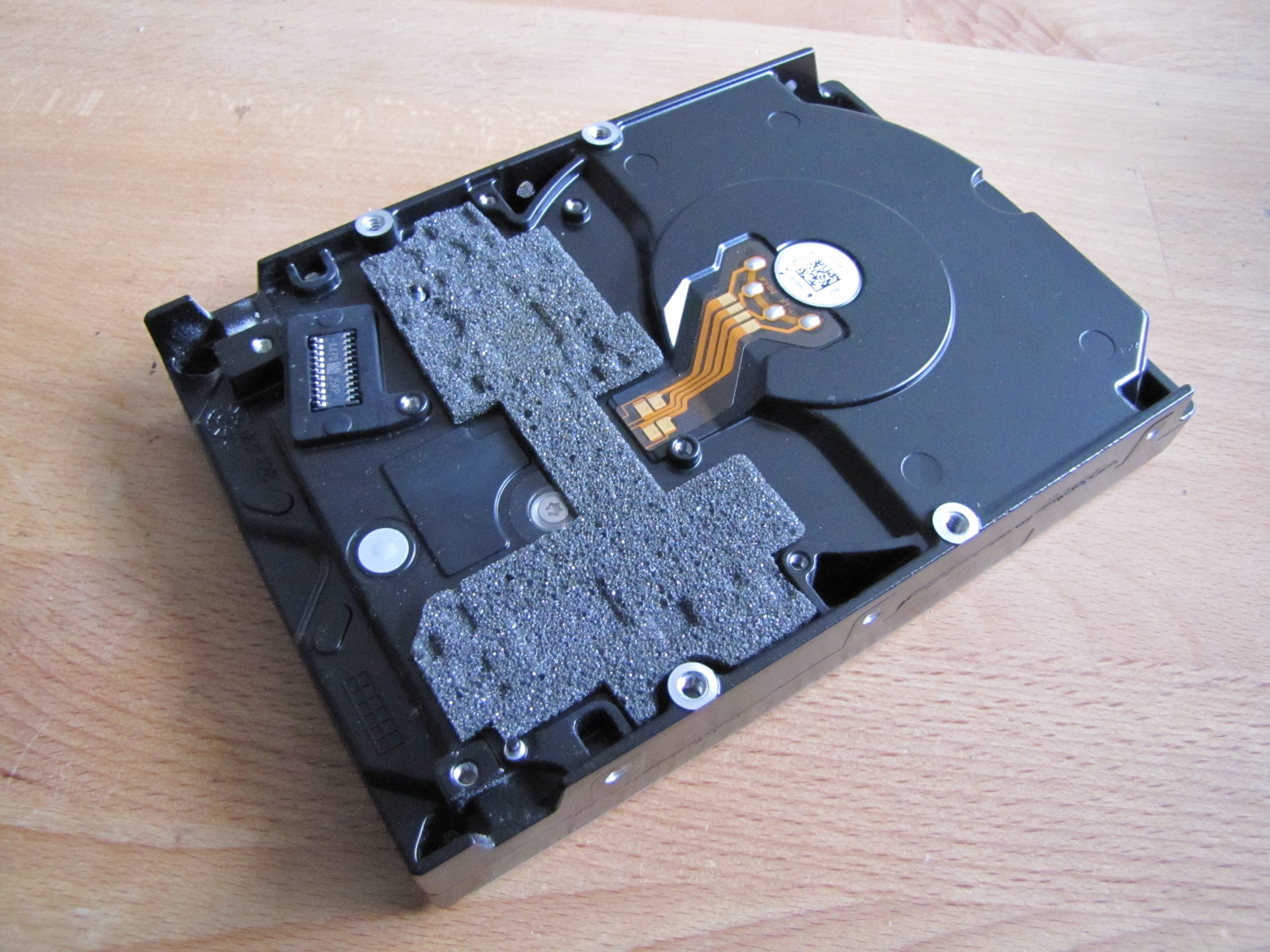
With some foam (which hasn’t held up very well, I must add) and a few screws, there’s the usual pressure-contact pin block for the PCB to head-stack interconnection. The spindle motor has the usual 4 contact pressure points too.
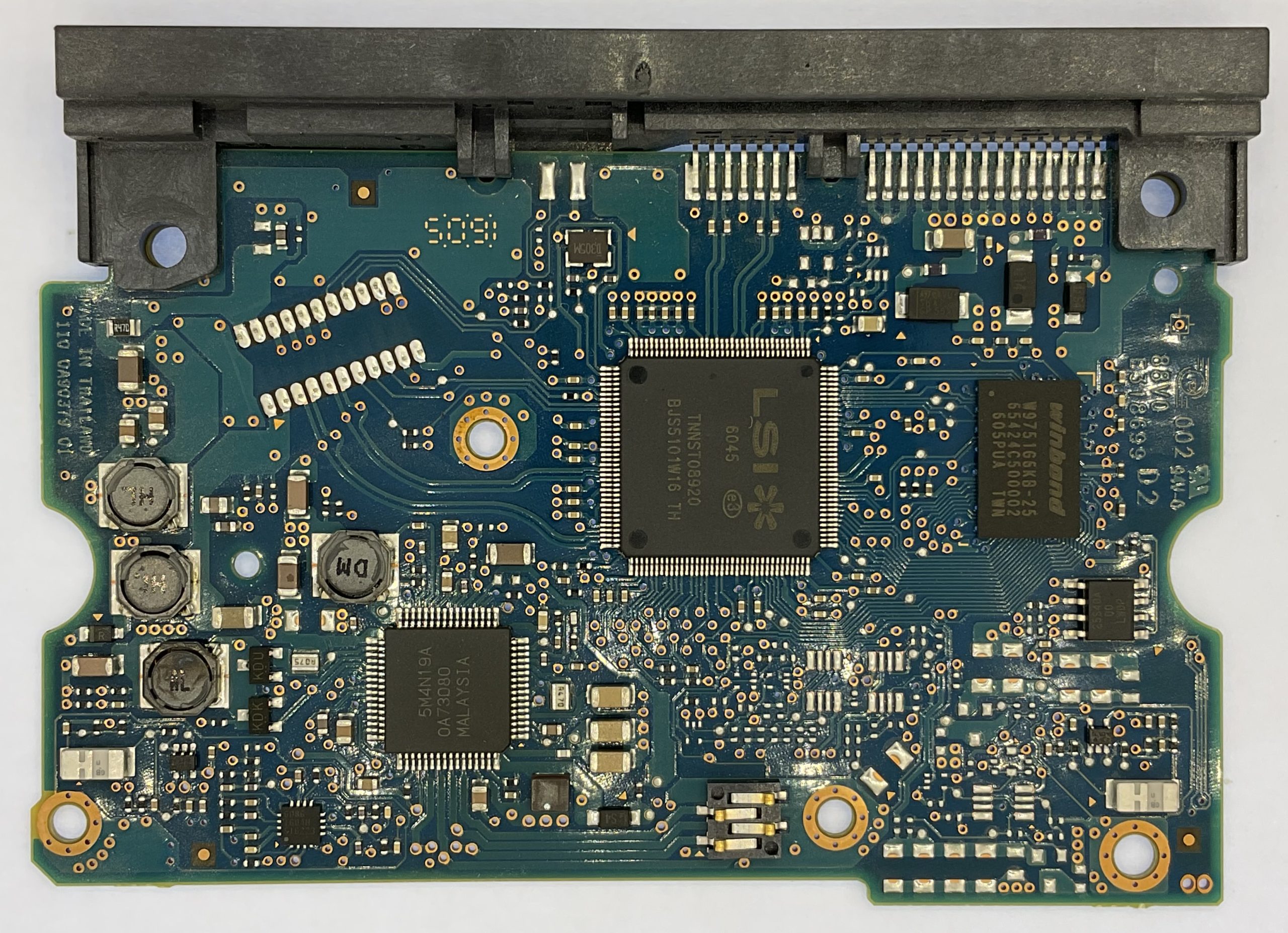
These PCB’s have been covered by many before, but there’s an LSI microcontroller IC, Winbond supplying the 64MB of cache/buffer RAM, alongside an unmarked spindle motor controller. HGST had no issues switching it up though, as slightly earlier units of this model from between 2014-2015 can be seen using Samsung for cache instead.
The HDN726040ALE614 would release only a year after this drive was manufactured, featuring 128MB of cache instead. The Deskstar NAS series as a whole during 2016 would be capable of 1.2TB per platter densities, such as with the 6TB HDN726060ALE610, also sharing 5 platters. The later largest model in the pack, the HDN721010ALE604, would manage 1.4TB per platter.
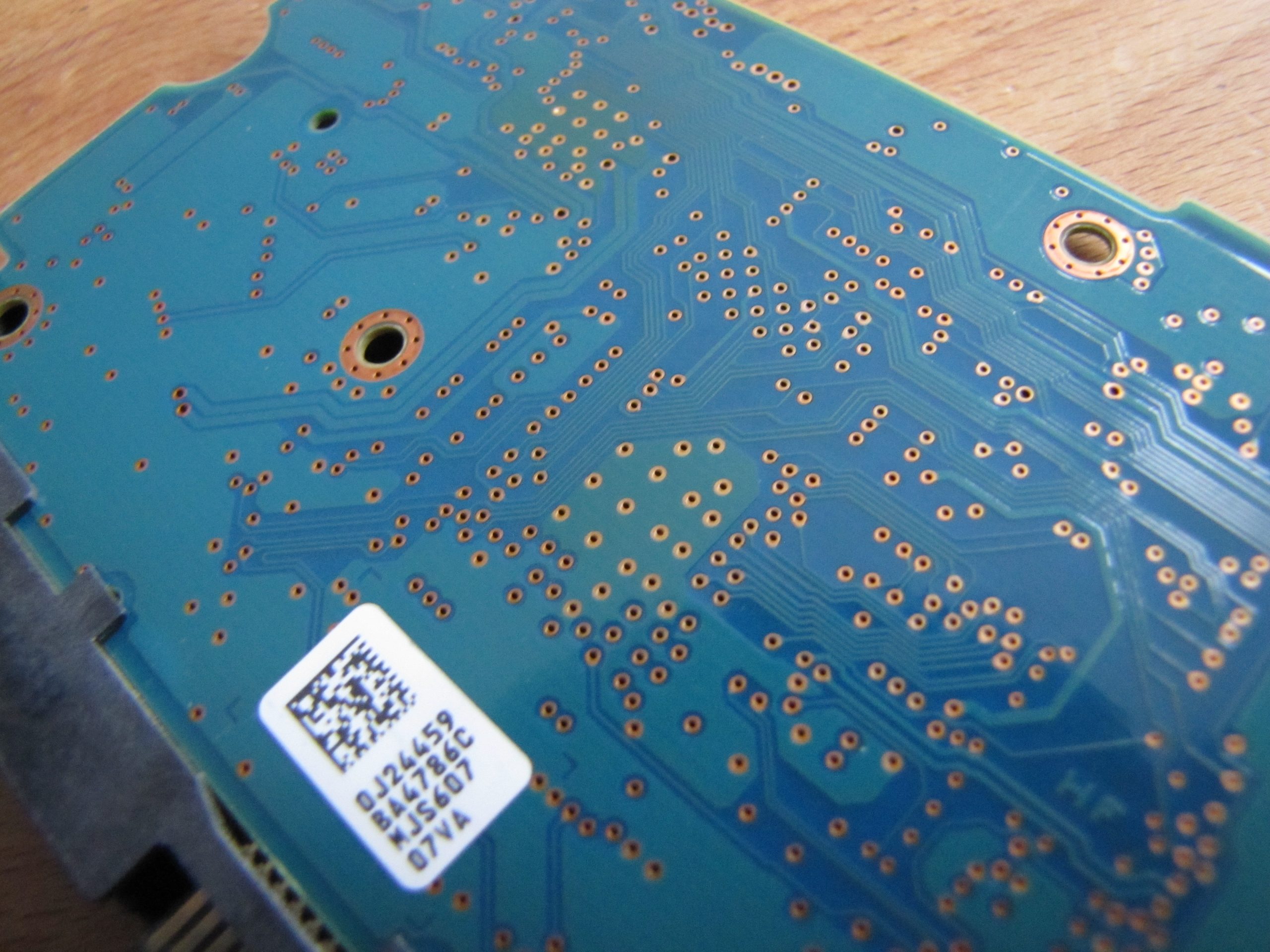
As will be seen below, these are warm running drives. The two major logic IC’s (MCU & motor control) have had quite the life, causing some minor discolouration on the PCB. It happens.
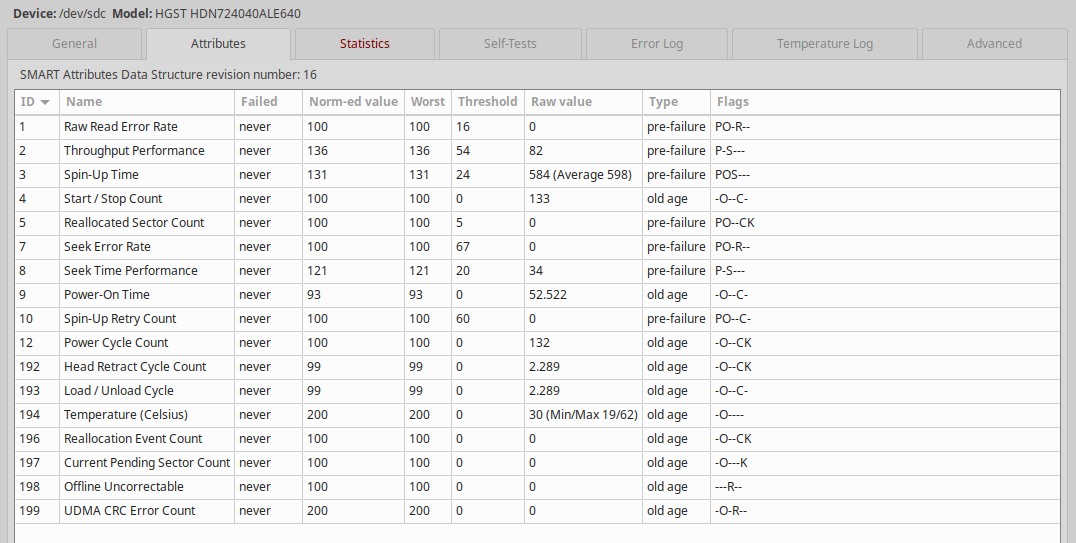
Before being retired for cold backup use, all four of these drives I had in service racked up just over 52k hours. 6 years is a good run and while I expect they could last another year or two, I’d rather not have them die while in service. I’ve personally routinely seen these reach between 70-80k hours before running into trouble, so that seems like a fairly good benchmark for when to expect these to fail from good old wear and tear. There are always outliers though, of course.

Fortunately, these drives support extended drive statistics, thus some interesting data can be attained.
Yes, they run hot. For reference, these used to run in an IBM System x3200 M3, with fairly good ventilation. 4 of these together is quite the hot bundle, this particular drive reaching over 60C for close to two hours. Nonetheless, the drive never ran into any issues even with several very hot summers.
These are quite possibly my favourite modern hard drives of all time, making it a sad day when they had to be retired. While the Toshiba N300’s are excellent replacements, it’ll take a few more years before I have the same warm (quite literally) experience as with these.
If you missed the video I made on this drive, you can find it here: